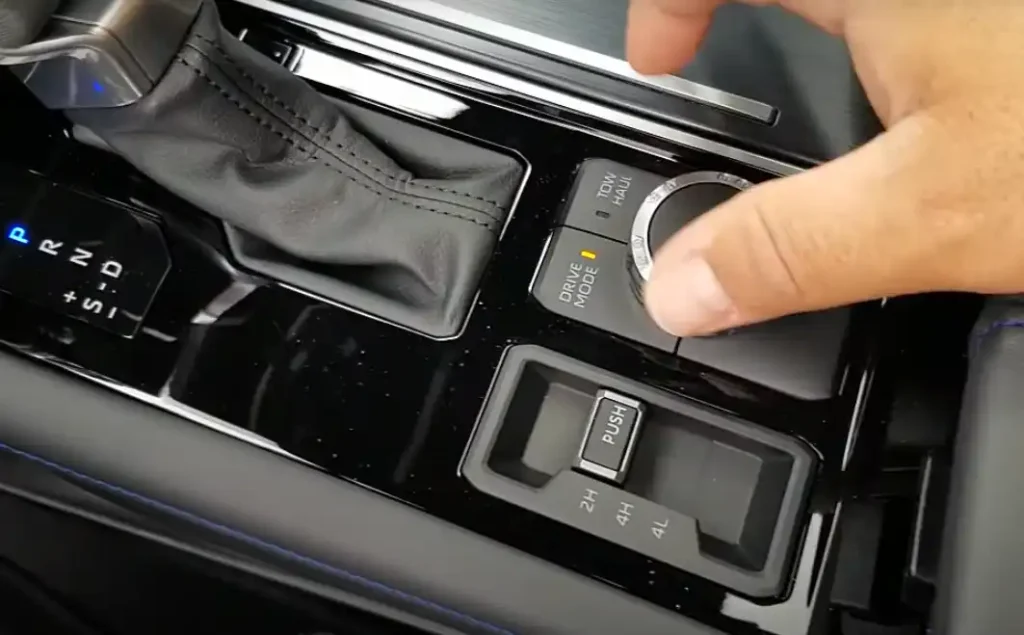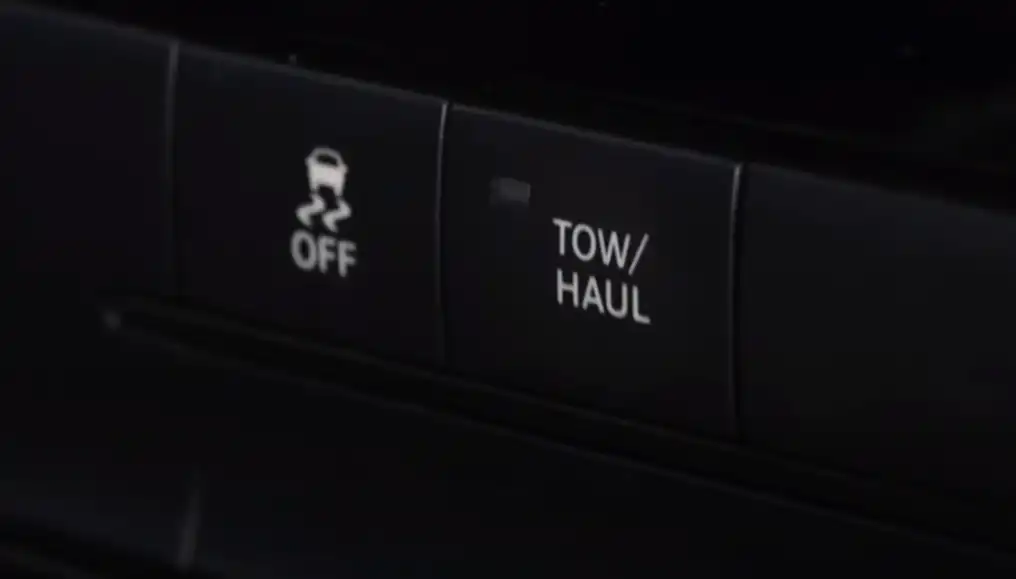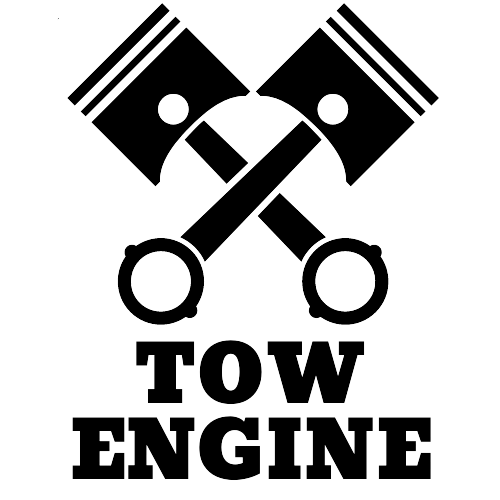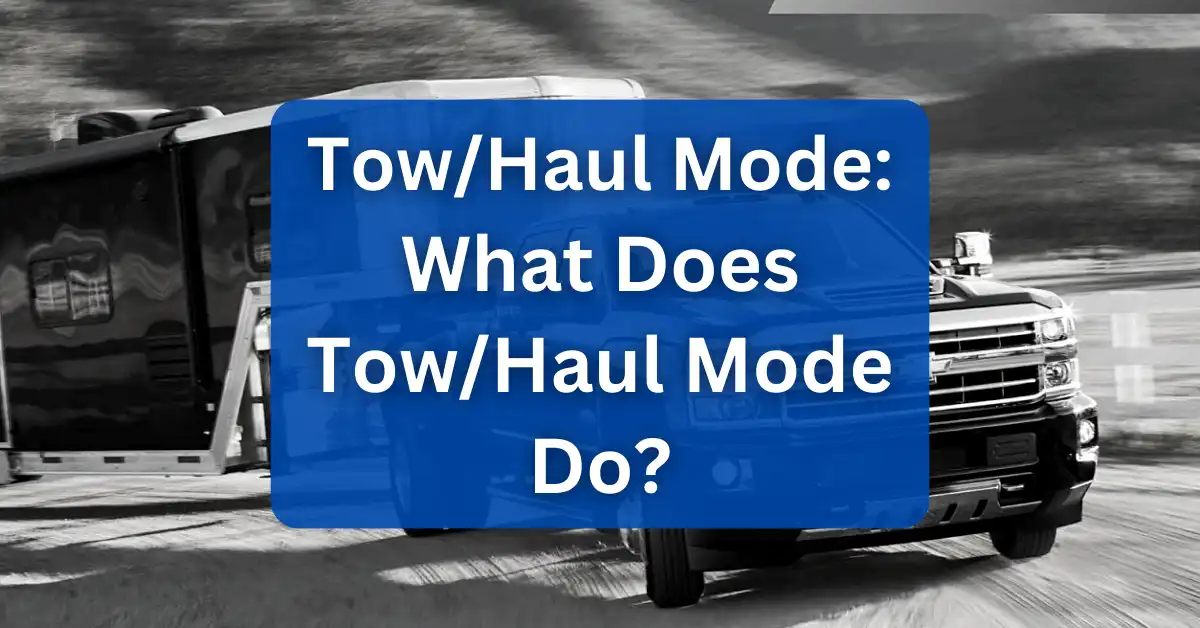Tow/Haul Mode: What Does Tow/Haul Mode Do?
When diving into the world of trucks, SUVs, and towing, a term that frequently pops up is the “Tow/Haul Mode“. Understanding what it is, how it functions, and its significance can drastically change your towing experience.
Let’s dive deep into this often overlooked yet crucial feature of modern vehicles.
Table of Contents
- What is Tow/Haul Mode?
- What Does Tow/Haul Mode Do and How Does it Work?
- Tow/Haul Mode Button Location
- Can you Tow without Tow/Haul Mode?
- What is the Benefit of Tow/Haul Mode?
- How Much Weight for Tow/Haul Mode?
- When to Use Tow/Haul Mode?
- Should I Use Tow/Haul Mode on the Interstate?
- Should I use Tow/Haul Mode on the Highway?
- How Fast can you go in Tow/Haul Mode?
- Does Tow/Haul Mode Use More Gas?
- How to Turn On and Off Tow/Haul Mode?
- What is Tow/Haul Mode U-Haul?
- Can you drive in Tow/Haul Mode all the Time?
What is Tow/Haul Mode?
Tow/Haul Mode is a feature in vehicles that adjusts the transmission’s shifting dynamics to optimize performance when towing or hauling heavy loads, ensuring efficient power delivery and enhanced vehicle stability during such tasks.
Designed with the driver’s safety and vehicle’s performance in mind, the Tow/Haul Mode is specifically calibrated for when the vehicle is carrying heavy cargo or towing trailers. Vehicles have evolved, and with them, their capabilities and features.
The Tow/Haul mode is one such evolution, meant for those who often find themselves moving heavy loads, be it for personal or professional reasons.
Historically, vehicles had no dedicated mode for towing, which led drivers to manually make adjustments, often risking both their safety and the health of the vehicle.
With the integration of the Tow/Haul Mode, drivers can let the vehicle’s system make those adjustments automatically, ensuring optimized performance.
What Does Tow/Haul Mode Do and How Does it Work?
Tow/Haul Mode modifies a vehicle’s transmission shift patterns to better accommodate the demands of towing or hauling heavy loads, ensuring smoother shifts, preventing frequent gear changes, and providing better engine power and control during such operations.
The mechanism behind the Tow/Haul Mode is fascinating. When a vehicle is towing something heavy, it requires more power. Engines can produce this power, but it’s the transmission that delivers it to the wheels.
When in regular driving mode, the transmission will shift to higher gears faster to maintain fuel efficiency. However, when hauling, this can strain the engine.
That’s where the Tow/Haul Mode comes in. Once activated, it delays the transmission’s upshift in each gear, allowing the engine to rev higher and produce the power needed for towing.
In addition, the mode may also prompt quicker downshifts when slowing down, offering engine braking to help reduce wear on the vehicle’s braking system.
Moreover, in many advanced vehicles, the Tow/Haul Mode might also interact with other systems like the Electronic Stability Control (ESC) to ensure safe and stable towing.
Tow/Haul Mode Button Location
The Tow/Haul Mode button location varies by vehicle but is commonly found on the dashboard, center console, gear shift lever, or steering column. An indicator light on the dashboard illuminates when the mode is active.


- Dashboard: Many vehicles have the Tow/Haul button on their dashboard. This is a convenient location as it’s easily visible and accessible to the driver.
- Center Console: Some vehicles might have a button on the central console, especially those with a more extensive array of controls and buttons for various functions.
- Gear Shift Lever: Another common location is on the gear shift lever itself, often on the end of the shifter or as a button integrated into the lever’s design. This placement ensures the driver can quickly activate the mode when making gear changes or starting a journey.
- Steering Column: A few models might even have a stalk on the steering column, similar to windshield wiper or indicator controls, dedicated to the Tow/Haul Mode.
- Indicator Light: No matter the button’s location, once Tow/Haul Mode is engaged, an indicator light, often depicting a trailer, will illuminate on the dashboard. This light confirms the mode is active.
In any case, the specific location can vary based on the vehicle’s make and model. For the most accurate information, drivers should consult their vehicle’s owner manual, which will provide a clear indication of where to find and how to use the Tow/Haul Mode button.
Can you Tow without Tow/Haul Mode?
Yes, you can tow without Tow/Haul Mode. However, using this mode optimizes the vehicle’s performance when towing, providing smoother gear shifts and enhanced stability. While not mandatory, it’s recommended for better towing efficiency and safety.
Towing without the Tow/Haul Mode is entirely feasible. Vehicles have been towing loads way before this technology came into existence. But, doing so comes with its challenges.
Without the Tow/Haul Mode, drivers must be more attentive to the vehicle’s performance, ensuring it doesn’t get overstrained. This often involves manually managing the gears, maintaining a lower speed, and being cautious about brake wear.
Over time, consistently towing heavy loads without using Tow/Haul Mode could lead to quicker wear and tear on the vehicle, especially the transmission.
Modern vehicles equipped with this mode offer it to provide an added layer of protection and enhance the overall towing experience.
What is the Benefit of Tow/Haul Mode?
The benefit of Tow/Haul Mode is to enhance a vehicle’s towing performance by adjusting transmission shift patterns, ensuring smoother gear shifts, reduced gear hunting, and improved power and stability when hauling heavy loads or trailers.
- Optimized Power Delivery: As discussed earlier, the mode adjusts the transmission to ensure that the engine’s power is effectively utilized, especially during uphill climbs or when starting from a standstill with a heavy load.
- Reduced Strain on Transmission: By adjusting shift points, the Tow/Haul Mode ensures the transmission isn’t unduly strained, prolonging its lifespan.
- Enhanced Braking: The Tow/Haul Mode aids in engine braking. When you’re going downhill with a heavy load, this is invaluable. It helps in slowing the vehicle down without relying too much on the brake pedal, reducing the chances of brake fade.
- Safety: Towing large loads can be risky, especially when on highways or windy roads. The Tow/Haul Mode works in tandem with other vehicle systems to ensure the vehicle remains stable and the driver remains in control.
- Fuel Efficiency: While towing will inevitably consume more fuel, the Tow/Haul Mode ensures that the engine and transmission work as efficiently as possible under the circumstances, potentially saving fuel in the long run.
How Much Weight for Tow/Haul Mode?
Tow/Haul Mode is typically recommended when towing or carrying loads nearing or exceeding half of the vehicle’s rated towing capacity. However, specific weight recommendations vary by vehicle, so it’s essential to consult the owner’s manual for precise guidelines.
Vehicle manufacturers design their vehicles with specific weight-bearing capacities in mind. For instance, a light-duty truck might be rated to tow up to 5,000 pounds, while a heavy-duty truck could handle up to 20,000 pounds or even more.
When considering how much weight would warrant the use of Tow/Haul Mode, several factors come into play:
- Vehicle’s Towing Capacity: Always refer to the vehicle’s owner manual. Manufacturers often specify when to engage the Tow/Haul Mode concerning the load’s weight.
- Transmission Strain: Even if the weight is below the vehicle’s maximum towing capacity, if the transmission seems to shift frequently or feels strained, it’s a good idea to activate the Tow/Haul Mode.
- Nature of the Load: The weight might not be the only consideration. For example, towing a large boat that catches a lot of wind resistance might warrant using the Tow/Haul Mode even if the boat’s weight is below the 50% threshold.
When to Use Tow/Haul Mode?
Use Tow/Haul Mode when towing or hauling heavy loads, navigating hilly terrains, or in stop-and-go traffic to optimize transmission performance, ensure smoother shifts, and provide better engine control. Always refer to the vehicle’s manual for specific scenarios and recommendations.
Beyond just weight considerations, here are some scenarios where using the Tow/Haul Mode can be beneficial:
- Hilly Terrains: When driving uphill or downhill, the Tow/Haul Mode can assist in managing the vehicle’s power and maintaining control.
- Stop-and-Go Traffic: In situations where there’s a lot of braking and accelerating, this mode can ensure the transmission doesn’t overwork itself with constant shifting.
- Long Drives: If you’re on a long trip with a heavy trailer or load, the Tow/Haul Mode can help in optimizing performance and fuel efficiency.
- Tight Maneuvers: If you’re navigating through tight spaces, like a campground or narrow streets, the Tow/Haul Mode can provide better control.
Should I Use Tow/Haul Mode on the Interstate?
Yes, when towing on the interstate, using Tow/Haul Mode can be beneficial. It aids in maintaining consistent power, especially at higher speeds, ensuring optimal transmission shifts and providing additional control during steep grades or overtaking maneuvers.
Interstates often mean higher speeds and longer travel durations. Here’s why the Tow/Haul Mode can be useful:
- Maintaining Speed: At higher interstate speeds, the vehicle needs to deliver consistent power to tow loads. Tow/Haul Mode ensures the transmission doesn’t shift prematurely, keeping the vehicle at optimal power ranges.
- Overtaking: When passing other vehicles, a burst of speed is sometimes needed. The Tow/Haul Mode can help in providing that additional power quickly.
- Descending Grades: Interstates can have long downhill sections. The mode can aid in engine braking, reducing the reliance on the brake pedal and the risk of brake fade.
Should I use Tow/Haul Mode on the Highway?
Yes, using Tow/Haul Mode on the highway is advisable when towing. It optimizes transmission performance, allowing for smoother gear shifts and enhanced engine control, especially during accelerations, decelerations, and uphill climbs, ensuring a stable and efficient towing experience.
Highways, while generally not as fast-paced as interstates, still present challenges:
- Acceleration: Entering a highway requires acceleration to match the speed of other vehicles. The Tow/Haul Mode ensures the vehicle doesn’t shift up too early, providing adequate power to merge smoothly.
- Changing Conditions: Highways often have varying conditions – from flat stretches to hilly terrains. The mode helps in adjusting the vehicle’s performance according to these changes.
- Fuel Efficiency: On long highway stretches, consistent power delivery can mean better fuel efficiency. Tow/Haul aids in maintaining this consistency.
How Fast can you go in Tow/Haul Mode?
Tow/Haul Mode doesn’t set a speed limit, but when towing, it’s essential to adhere to manufacturer-recommended towing speeds and local road regulations. Always consult the vehicle’s owner’s manual and ensure safe speeds relative to the towed load’s size and weight.
While in Tow/Haul Mode, your vehicle adjusts transmission behaviors to cater to the weight you’re towing, ensuring you have the required torque and power. However, when it comes to speed:
- Manufacturer’s Guidelines: Always consult your vehicle’s owner manual. Manufacturers often provide speed recommendations when towing.
- Towing Equipment: The capabilities of your towing equipment (hitch, tow bar, trailer brakes, etc.) can also dictate safe speeds.
- Stability Concerns: Higher speeds can lead to reduced control, especially when towing large or tall trailers susceptible to wind or causing sway.
Does Tow/Haul Mode Use More Gas?
Yes, Tow/Haul Mode can lead to increased fuel consumption. This is because the engine and transmission work harder to accommodate the demands of towing or hauling, leading to higher RPMs and greater fuel usage, especially during extended periods in lower gears.
- Increased Engine Load: When towing, the engine works harder. This added workload inherently consumes more fuel.
- Transmission Behavior: In Tow/Haul Mode, the transmission might remain in lower gears for longer periods, leading to higher RPMs and consequently, more fuel consumption.
- Efficiency Balance: While it may seem like the Tow/Haul Mode consumes more gas, not using it when required could lead to even less efficient performance or potential wear and tear, costing more in the long run.
How to Turn On and Off Tow/Haul Mode?
Activating or deactivating the Tow/Haul Mode is typically straightforward and varies slightly depending on the vehicle model.
To activate Tow/Haul Mode, press the dedicated button, usually found on the dashboard, center console, or gear shift lever. An indicator light on the dashboard confirms it’s on. To deactivate, press the button again. Some vehicles might auto-turn off the mode upon restarting the engine.
- Dedicated Button: Most vehicles with this feature have a Tow/Haul button, usually located on the dashboard, center console, or on the gear shift lever. Simply pressing this button will engage or disengage the mode.
- Indicator Light: Once activated, an indicator light, often in the shape of a trailer, will illuminate on the dashboard, confirming that Tow/Haul Mode is on.
- Automatic Deactivation: Some vehicles may automatically turn off the Tow/Haul Mode after the engine is turned off and restarted.


Always refer to your vehicle’s owner manual for specific instructions.
What is Tow/Haul Mode U-Haul?
Tow/Haul Mode in U-Haul trucks adjusts the transmission’s shifting pattern to enhance performance when carrying heavy loads. Designed for renters, this feature ensures safer and more efficient driving, especially when the truck is loaded to near its capacity.
U-Haul trucks are frequently rented for moving purposes, where they are loaded with heavy belongings. Recognizing the varied weights and drivers’ inexperience with large vehicles:
- Optimized for Renters: U-Haul integrates the Tow/Haul Mode to make the driving experience safer and more intuitive for renters.
- Load Variability: Considering renters might fill up a U-Haul truck to its maximum capacity, the Tow/Haul Mode becomes essential to ensure optimized performance.
Can you drive in Tow/Haul Mode all the Time?
While you can technically drive in Tow/Haul Mode all the time, it’s not recommended when not towing or hauling. Using the mode unnecessarily can lead to decreased fuel efficiency and undue stress on the transmission.
Reasons to avoid constant Tow/Haul Mode:
- Fuel Efficiency: As discussed, this mode can lead to higher fuel consumption due to extended periods in lower gears.
- Wear and Tear: Keeping the transmission in this mode can cause it to work harder than necessary, potentially shortening its lifespan.
- Optimized Driving Experience: Vehicles are designed to deliver a balanced performance under normal driving conditions. Using Tow/Haul Mode when not needed can alter this balance, leading to a less-than-optimal driving experience.
In conclusion, while Tow/Haul Mode is an excellent feature for enhancing towing and hauling experiences, it’s crucial to use it judiciously, understanding its purpose and benefits. Proper use ensures that both you and your vehicle remain safe, efficient, and in optimal condition.
Explore Capacities by Vehicle Make


Is it possible to drive in Tow/Haul Mode constantly, or would this cause unnecessary strain on the vehicle’s transmission and engine? What are the potential long-term effects of using Tow/Haul Mode as a default driving setting?
Driving in Tow/Haul mode all the time isn’t a great idea. It’s like constantly running a sprint – you’ll wear yourself out faster. Tow/Haul makes your engine and transmission work harder, which is good for towing but bad for everyday driving.
Why it’s bad:
Wears out your engine and transmission faster.
Guzzles more gas.
When to use it:
Towing or hauling heavy loads.
Driving up steep hills.
Basically, save Tow/Haul for when you really need it. Your vehicle will thank you!